 Hi Gang,
Hi Gang,
Happy New Year! I am excited to share the dates (below) for my popular series of 5 property-owner, “Gardening for Wildlife” workshops (pdf). They’ll be held in March 2013, the perfect time to shake off winter and begin planning and planting (or enhancing) your property and wildlife garden.
Native plants and wildlife-friendly practices are the key and will be emphasized and detailed throughout.
I present a zillion one- to two-hour programs each year and maybe you’ve attended a few of these. I love teaching them, but (with only one or two hours) they are more one-sided presentations, me sharing fun natural history information and images with you, the audience.
These workshops offer the opportunity to be far more in-depth and interactive and are more likely to empower you, take you to the next level.
The 5-hour format (10 a.m. to 3 p.m.) allows for:
- an interactive workshop atmosphere
- each workshop covers a unique aspect of wildlife gardening (in-depth)
- each workshop builds on the others, but is not repetitive (so you’ll want to attend all 5, if possible, to maximize your learning opportunity)
- resources (handouts and circulated books) will be shared and showcased
- you’ll learn how to utilize these resources (find answers to burning questions you may have)
- time for in-depth questions
- time for in-depth answers
- during a working lunch we’ll brainstorm (as a group) each participant’s specific challenges (you’ll draw a rough sketch of your yard and submit a photo of your sketch to project for this)
- time to get to know one another and learn from each other (of garden triumphs and tribulations, successes and pitfalls). Nothing beats collective experience and roundtable discussion
- each workshop will culminate in a site visit to a nearby backyard habitat where wildlife-friendly practices and design and plant selections will be showcased
So, what do you say! Will I see you in March?
 Sign up today and begin getting ready for the workshops. Draw a rough sketch of your yard, indicating structures (and hardscapes like driveways, decks, etc.), existing habitats (lawn, forest, lone trees, shrub islands, gardens, bird feeding station, brush pile, etc.), and mark NORTH, SOUTH, EAST, WEST on the sketch. Take time to note the sun’s path through your yard and where the sunniest areas are. Bring a wish list of the elements you want to add as well as the elements you need to work around.
Sign up today and begin getting ready for the workshops. Draw a rough sketch of your yard, indicating structures (and hardscapes like driveways, decks, etc.), existing habitats (lawn, forest, lone trees, shrub islands, gardens, bird feeding station, brush pile, etc.), and mark NORTH, SOUTH, EAST, WEST on the sketch. Take time to note the sun’s path through your yard and where the sunniest areas are. Bring a wish list of the elements you want to add as well as the elements you need to work around.
****************************************************************************************************
GARDENING FOR WILDLIFE WORKSHOPS with Pat Sutton (pdf)
at NJ Audubon’s Nature Center of Cape May
1600 Delaware Avenue, Cape May, NJ 08204 (609-898-8848)
- Saturday, March 2, 2013 – How to Create a Backyard Habitat for Wildlife
- Sunday, March 3, 2013 – How to Create a Pollinator Garden (for Butterflies, Hummingbirds, Moths, Bees, & More)
- Saturday, March 9, 2013 – How to Create a Wildflower Meadow & Wildlife Pond
- Saturday, March 16, 2013 – Battlestar Backyardia – Battling the Alien Invaders (How to Recognize and Deal With Invasive Species)
- Saturday, March 23, 2013 – Landscape Design With Wildlife In Mind
Time: 10:00 a.m. to 3:00 pm.
Where: The March 2, 3, 9, & 16 workshops will be held at the Cape May Bird Observatory Center for Research & Education, 600 Rt. 47 N, Cape May Court House, NJ 08210 (and include a site visit to Sutton’s nearby wildlife gardens). The March 23 workshop will be held at the Nature Center of Cape May, 1600 Delaware Ave., Cape May, NJ 08204 (and include a site visit to a Cape May wildlife garden).
Limit: 20 participants; preregistration is required (through NJ Audubon’s Nature Center of Cape May, 1600 Delaware Avenue, Cape May, NJ 08204; 609-898-8848).
Cost/workshop: $35 member of NJ Audubon Society, $45 nonmember (includes handouts).
Sign up for all five workshops for a discount: $125 member, $150 nonmember.
********************************************************************************************************




 Ken Soltesz entered Cape May County’s natural history scene in 1989 and turned it upside down with his keen interest in dragons and damsels. He grew a small army of odonate enthusiasts.
Ken Soltesz entered Cape May County’s natural history scene in 1989 and turned it upside down with his keen interest in dragons and damsels. He grew a small army of odonate enthusiasts.



 We were away in South Carolina running two butterfly counts (in their 20th year – a whole other butterfly-rich story to tell). Upon our return on August 29th, we found our garden swimming in Painted Ladies. We tallied 21, far more than we’d ever seen in our garden before.
We were away in South Carolina running two butterfly counts (in their 20th year – a whole other butterfly-rich story to tell). Upon our return on August 29th, we found our garden swimming in Painted Ladies. We tallied 21, far more than we’d ever seen in our garden before.

 Much to our amazement, numbers steadily rose each day: 35 on August 30, 54 on August 31, and 70 on September 1. Numbers held steady at 70 for a few days, then shot up to 106 on September 5. Clouds of butterflies lifted, scattered, and settled back on blooming Sedum and other plants as we slowly and reverently walked through our magic garden.
Much to our amazement, numbers steadily rose each day: 35 on August 30, 54 on August 31, and 70 on September 1. Numbers held steady at 70 for a few days, then shot up to 106 on September 5. Clouds of butterflies lifted, scattered, and settled back on blooming Sedum and other plants as we slowly and reverently walked through our magic garden.


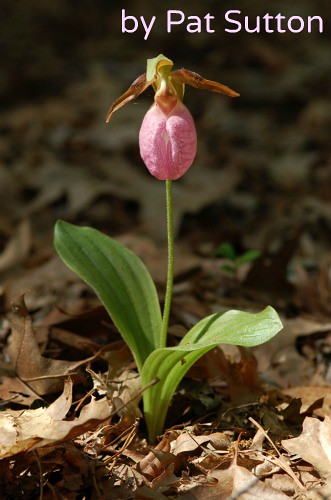
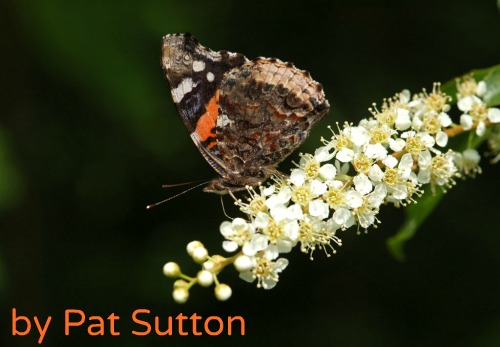

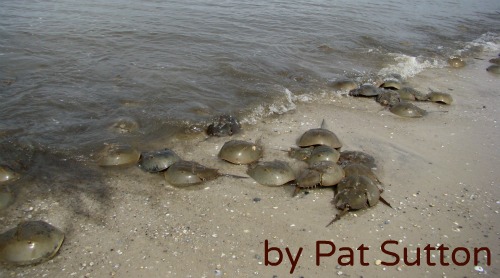
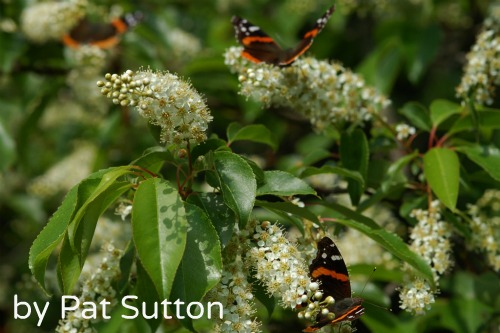
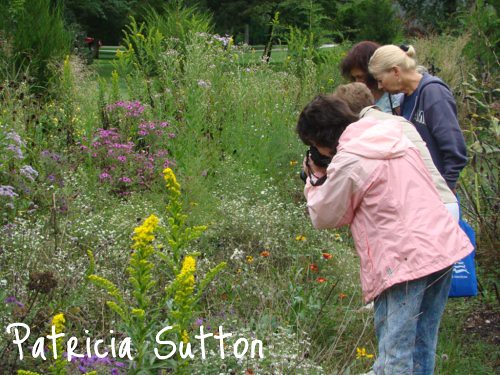 This is the 21st year I’ve been leading these tours of private backyard wildlife gardens. And they just keep getting yummier and yummier!
This is the 21st year I’ve been leading these tours of private backyard wildlife gardens. And they just keep getting yummier and yummier!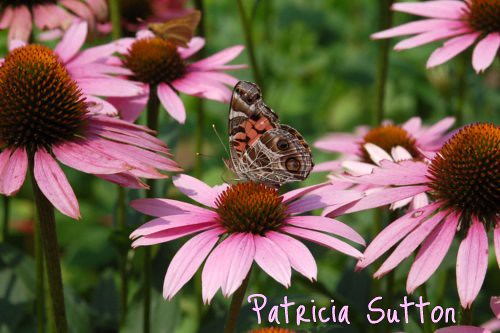 More butterfly and hummingbird gardens are tucked into Cape May County than probably anywhere else in the country. Mid-July is the time of peak butterfly diversity and numbers. Gardens look completely different from one month to the next (so seriously consider all 9 tours). Learn the magic combination of native nectar plants and caterpillar plants that makes a garden especially attractive to butterflies. Design ideas and new wildlife plants will be showcased while tour participants are entertained by a blizzard of butterflies and hummingbirds.
More butterfly and hummingbird gardens are tucked into Cape May County than probably anywhere else in the country. Mid-July is the time of peak butterfly diversity and numbers. Gardens look completely different from one month to the next (so seriously consider all 9 tours). Learn the magic combination of native nectar plants and caterpillar plants that makes a garden especially attractive to butterflies. Design ideas and new wildlife plants will be showcased while tour participants are entertained by a blizzard of butterflies and hummingbirds.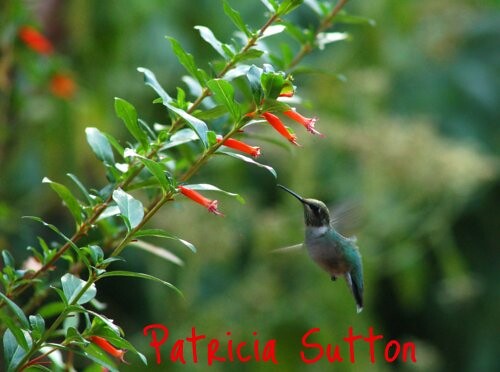
 At the peak of Cape May County’s world-famous fall Monarch migration, tour diverse gardens that have hosted Monarchs since May. Each features native nectar plants and as many as five different kinds of milkweed (used by Monarchs for egg laying to create the next generation). Expect clouds of Monarchs and other butterflies, Monarch eggs, caterpillars, and maybe even a chrysalis. The complex Monarch migration will be both explained and enjoyed.
At the peak of Cape May County’s world-famous fall Monarch migration, tour diverse gardens that have hosted Monarchs since May. Each features native nectar plants and as many as five different kinds of milkweed (used by Monarchs for egg laying to create the next generation). Expect clouds of Monarchs and other butterflies, Monarch eggs, caterpillars, and maybe even a chrysalis. The complex Monarch migration will be both explained and enjoyed.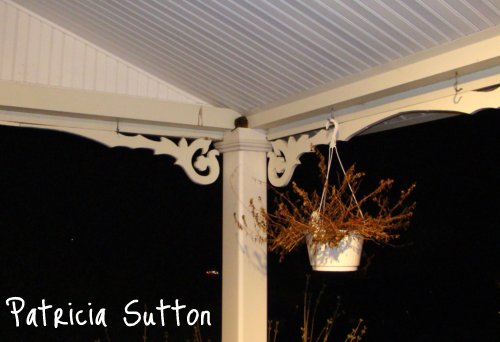

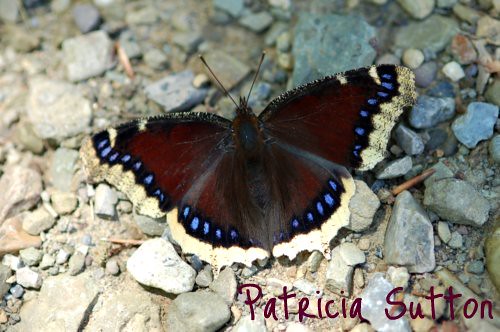 Manage your wildlife habitat for the survival of the wildlife you’ve attracted. Mourning Cloaks need leaf litter, brush piles, and hollow trees for their survival. Learn more about these ethereal butterflies by reading my latest post on
Manage your wildlife habitat for the survival of the wildlife you’ve attracted. Mourning Cloaks need leaf litter, brush piles, and hollow trees for their survival. Learn more about these ethereal butterflies by reading my latest post on